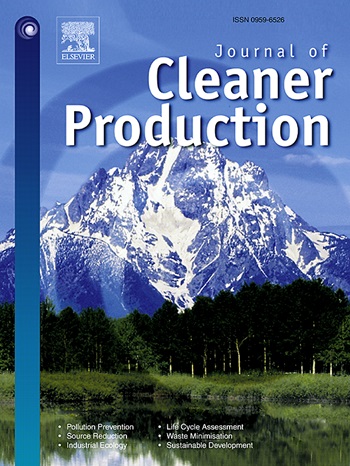Mitigating curtailments in offshore wind energy: a comparative analysis of new and second-life battery storage solutions
IF 9.7
1区 环境科学与生态学
Q1 ENGINEERING, ENVIRONMENTAL
引用次数: 0
Abstract
Challenging goals set for the energy transition by 2030 are prompting Mediterranean countries to plan significant offshore wind production. However, with the growth of intermittent renewable power fed into the grid, operators may be forced to introduce energy curtailments in the short term, since grid revamping could require more time than new installations. This study aims to evaluate possible management strategies for curtailed energy to assess its impact on the revenues of an offshore wind farm. Li-ion batteries are considered as energy storage systems (BESS) to reduce energy waste. A comparison between brand-new (NBESS) and second-life (SBESS) batteries has been performed to assess the economic and environmental benefits related to the adoption of past vehicle batteries. The first step of the analysis involves the optimization, by means of the levelized cost of energy (LCOE) minimization, of the layout of a floating offshore wind farm located in Sicily. Optimal inter-turbine distances of 14 and 7.5 diameters have been estimated in wind and cross-wind directions, respectively, corresponding to LCOEs ranging between 106 and 135 €/MWh. Then, a sensitivity analysis is carried out by varying the assumptions on curtailed energy remuneration and the daily and monthly distribution of curtailments. The second step of the study focuses on the management of curtailed power in order to evaluate the cost-effectiveness of NBESS and SBESS. Different BESS costs and curtailment scenarios are considered to account for the uncertainties in the energy market and component costs. Across all evaluated scenarios, results show that batteries, if correctly sized, enhance the revenues of the considered 1 GW wind farm up to 450 M€, corresponding to financial gains of 10 % with respect to the Net Present Value of the base plant. Regarding SBESS, although they can reach economic benefits comparable to NBESS only with capital costs of 50 €/kWh, savings of lithium coupled with carbon emission reduction up to 2400 t CO2-eq can represent a game-changer for a more sustainable diffusion of offshore energy.

减轻海上风能的削减:新电池和二次电池存储解决方案的比较分析
为2030年能源转型设定的具有挑战性的目标促使地中海国家计划大规模的海上风电生产。然而,随着间歇性可再生能源进入电网的增长,运营商可能会被迫在短期内引入能源削减,因为电网改造可能比新安装需要更多的时间。本研究旨在评估减少能源的可能管理策略,以评估其对海上风电场收入的影响。锂离子电池被认为是一种减少能源浪费的储能系统。对全新(NBESS)和二次寿命(SBESS)电池进行了比较,以评估采用旧电池的经济和环境效益。分析的第一步涉及到西西里岛浮式海上风电场布局的优化,通过最小化能源成本(LCOE)。在风向和侧风向下,分别估计了14和7.5直径的最佳涡轮机间距离,对应的lcoe范围在106和135€/MWh之间。然后,通过改变对减能补偿的假设以及减能的日分布和月分布进行敏感性分析。研究的第二步侧重于削减电力的管理,以评估NBESS和SBESS的成本效益。考虑到能源市场和组件成本的不确定性,考虑了不同的BESS成本和削减方案。在所有评估情景中,结果表明,如果尺寸正确,电池可以将考虑的1吉瓦风电场的收入提高到4.5亿欧元,相当于基础工厂净现值的10%的财务收益。关于SBESS,虽然它们的经济效益与NBESS相当,但资本成本仅为50欧元/千瓦时,锂的节省加上高达2400吨二氧化碳当量的碳排放量可以改变海上能源更可持续的扩散。
本文章由计算机程序翻译,如有差异,请以英文原文为准。
求助全文
约1分钟内获得全文
求助全文
来源期刊

Journal of Cleaner Production
环境科学-工程:环境
CiteScore
20.40
自引率
9.00%
发文量
4720
审稿时长
111 days
期刊介绍:
The Journal of Cleaner Production is an international, transdisciplinary journal that addresses and discusses theoretical and practical Cleaner Production, Environmental, and Sustainability issues. It aims to help societies become more sustainable by focusing on the concept of 'Cleaner Production', which aims at preventing waste production and increasing efficiencies in energy, water, resources, and human capital use. The journal serves as a platform for corporations, governments, education institutions, regions, and societies to engage in discussions and research related to Cleaner Production, environmental, and sustainability practices.
 求助内容:
求助内容: 应助结果提醒方式:
应助结果提醒方式:


